Awhile back I mentioned that I had created a sand mandala as a way for our church members to celebrate our interim pastor. The Reverend Donoghue had mentioned sand mandalas a few times as examples of how joy can be found in the process rather than in the finished work. He explained how monks would spend hours... days even... placing each colored grain of sand in intricate, meditative patterns. And when they finished, the art was swept or blown away. It seemed fitting that we, as a church, create one to show that... well, that we had been paying attention.
• I used a large (about 2 feet by 2 feet - or so) piece of masonite. Foam board could work too. Use a material that is very smooth, but not static-y.
• Tracing around large round objects or stencils would be the easiest way to create the basic circles, but I couldn't find anything that big in my studio. so I did it the old-fashioned way. Using a long ruler, I marked the centers of each edge of the board, then connected those dots to find the center of the board itself. I measured out intervals along each axis where I wanted my circles to be. ie: 4" and 6".
• Placing one end of the ruler on the center dot, I slowly rotated it, like the large hand on a clock, marking 4" and 6" with a dot each, at one o'clock, 2o'clock, etc. all the way around. Then I sketched in the circles (in pencil) by connecting all the 4" dots. then all the 6" dots.
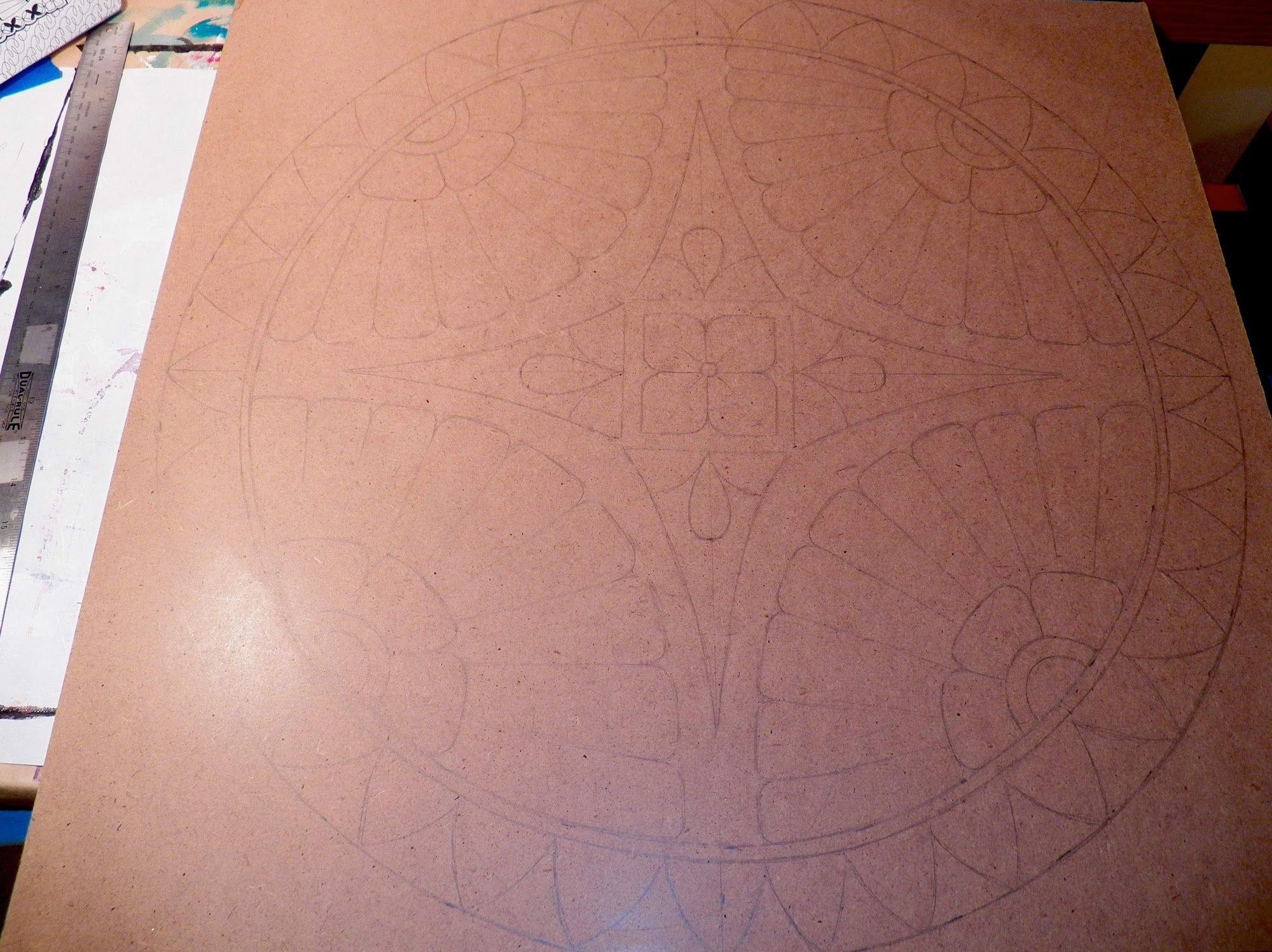
• Since I wanted this piece to be symmetrical, I lightly sketched in the basic shapes of the tangles. Normally, when doing a large Zentangle, a mural or such, I don't use any guides - I just draw.
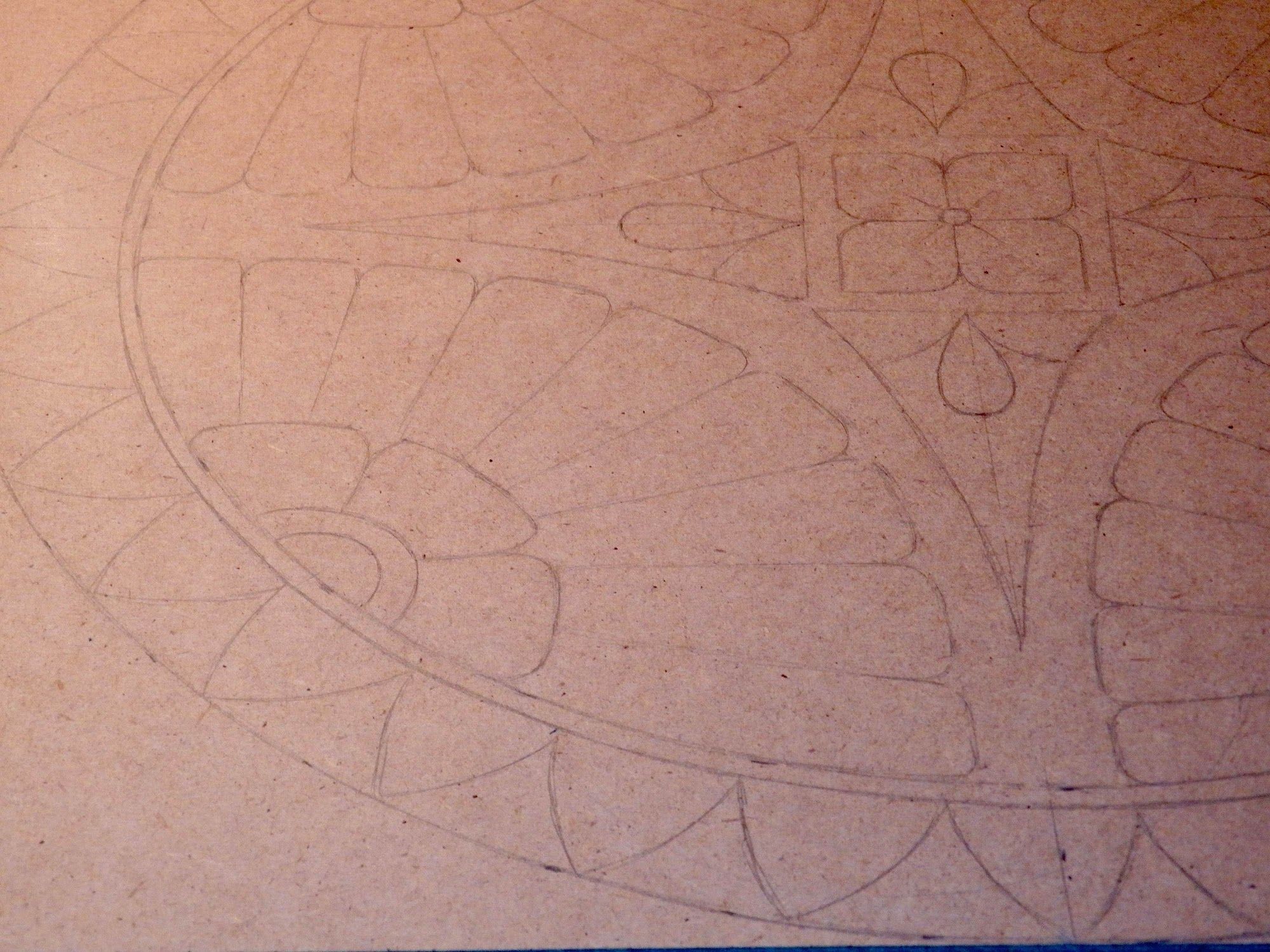
• I used black and white Sharpie oil-based markers to draw in all the tangles, then filled the larger shapes with black and white acrylic paint. I ended up using white gesso to get better coverage over the brown board. I was careful to keep all the brush strokes very smooth (so the sand wouldn't catch on them). Since some of the church council members had expressed their doubts about doing something "artistic" :-) I wanted to prove that this was easy and satisfying and anyone could do it. So I created the mandala on the board as if it were a template - like a coloring book or paint-by-number. I put the suggested colors down and all they would have to do was fill it in. (See the last picture with the Rev. holding the painted board)
• I put the colored sand into squeeze bottles (technically, "pour" bottle), but I also put extra sand into small food storage containers with plastic spoons. A few people felt more comfortable using a spoon - like sprinkling sugar onto cereal - it's a familiar motion.
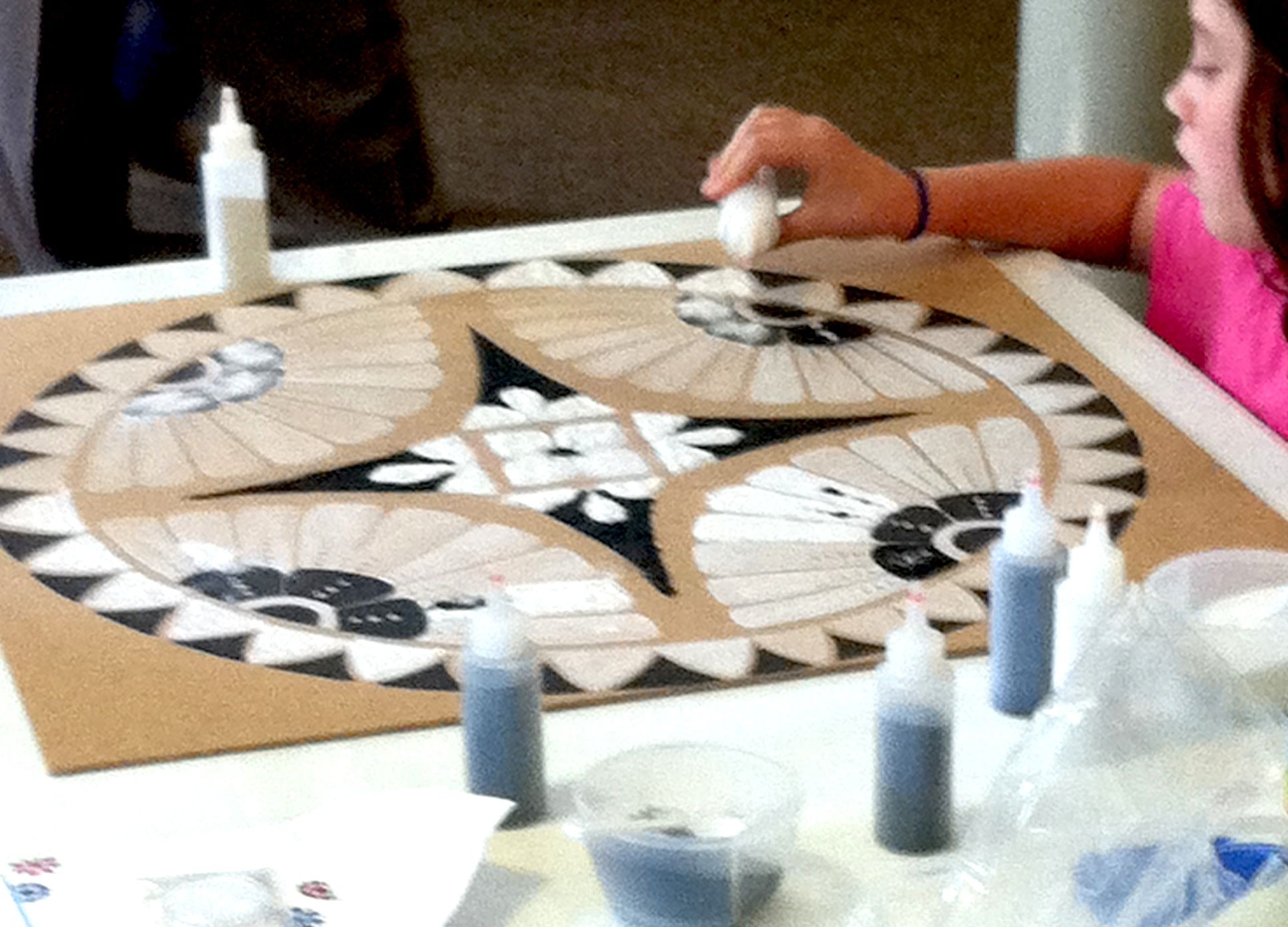
• It took a bit of coaxing to get people to give it a try. The kids dove right in, which gave the adults the confidence to try too. The kids got SO confident, they started adding their own touches and embellishments! Notice the hearts on the corners?
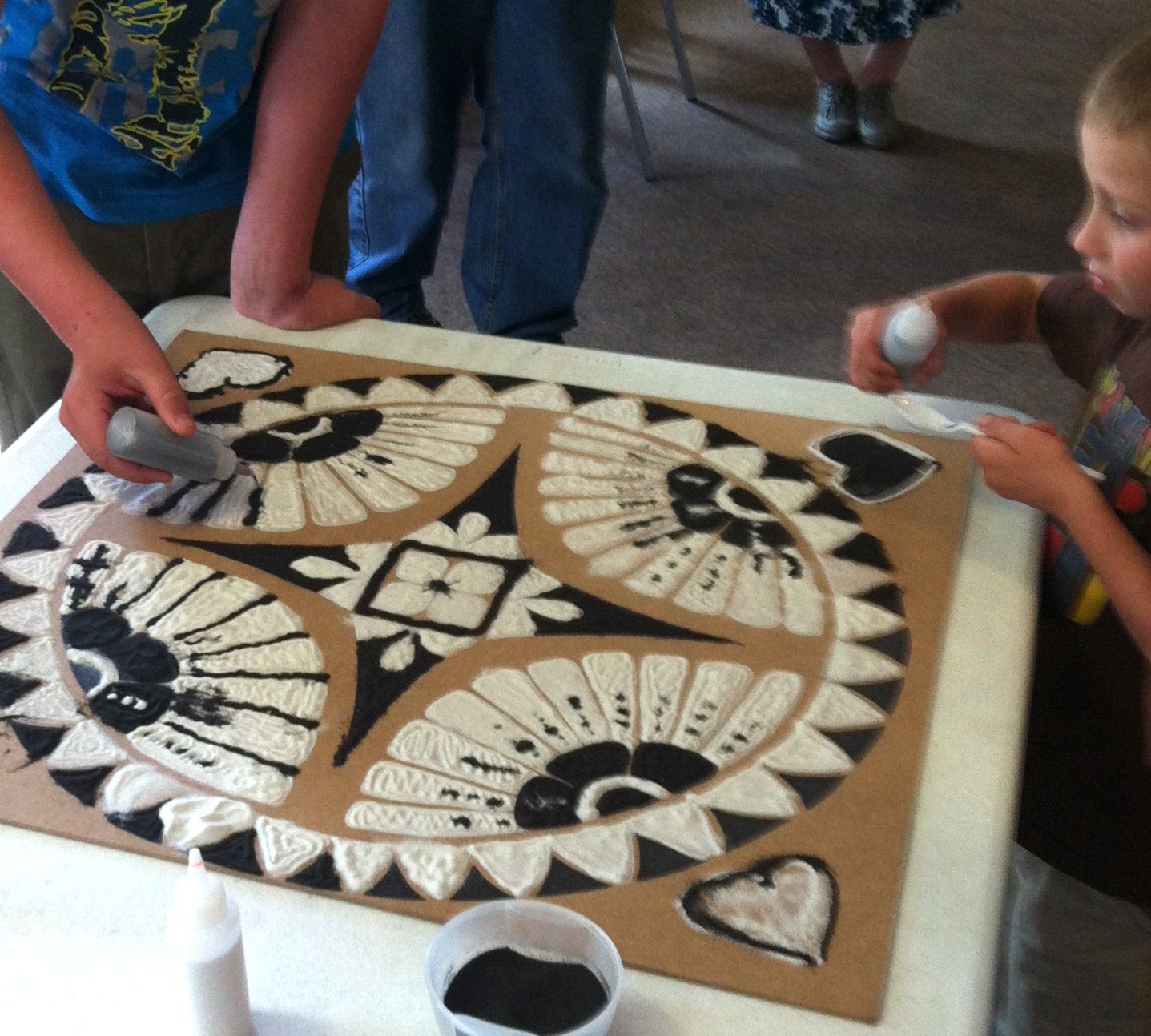
• An older women used black sand to draw lines between the flower petals and then the kids used that idea to embellish the embellishments.
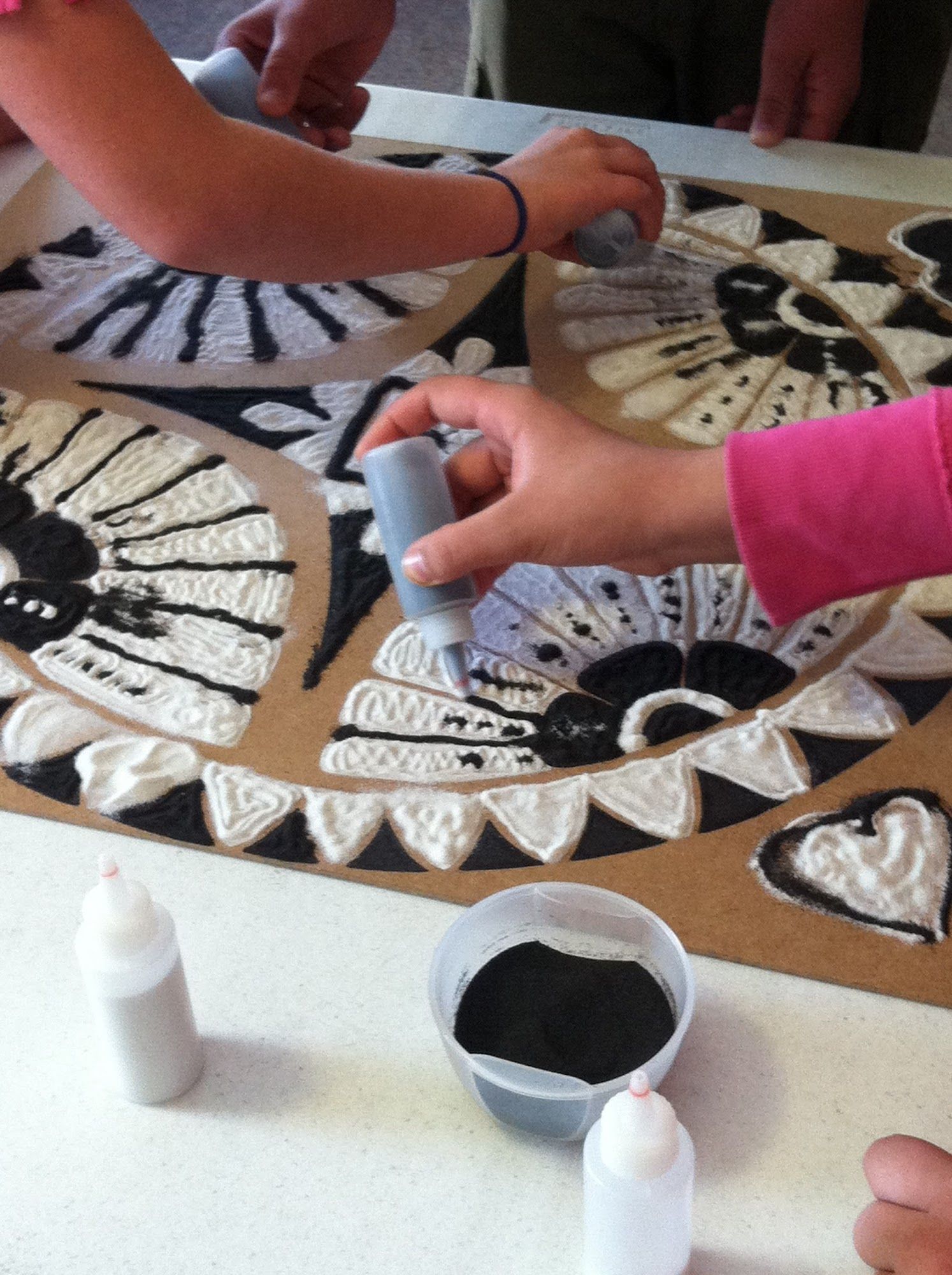
• One little boy discovered the side of the spoon worked very well as a "noodger"... it could push stray sand back into place or create an even line. Clever!
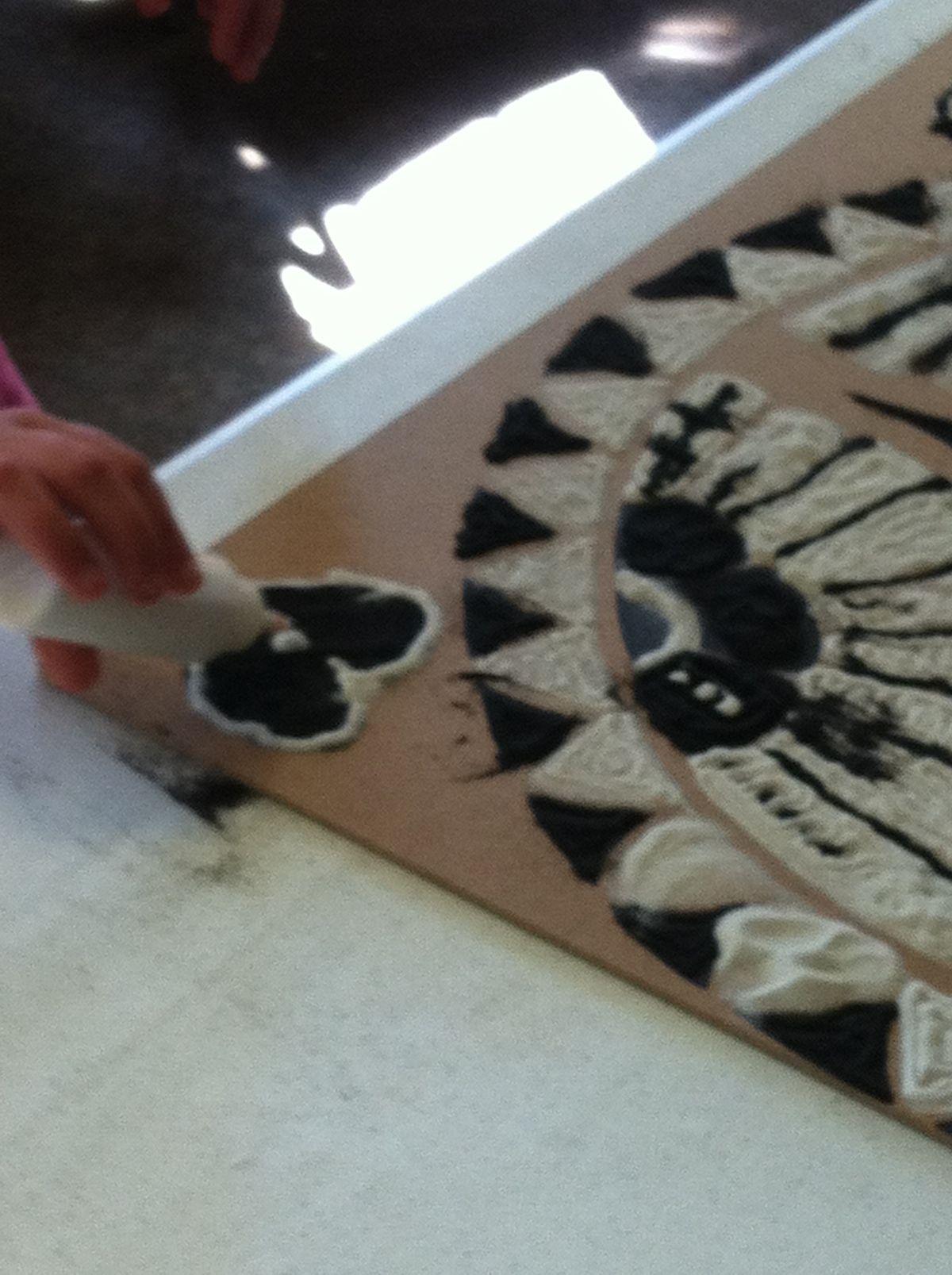
• When it was complete - in true Zentangle fashion - any blips and bloops, spills and differences in technique - all blended into the overall design. It looked so beautiful! Everyone stood around looking very pleased with themselves.
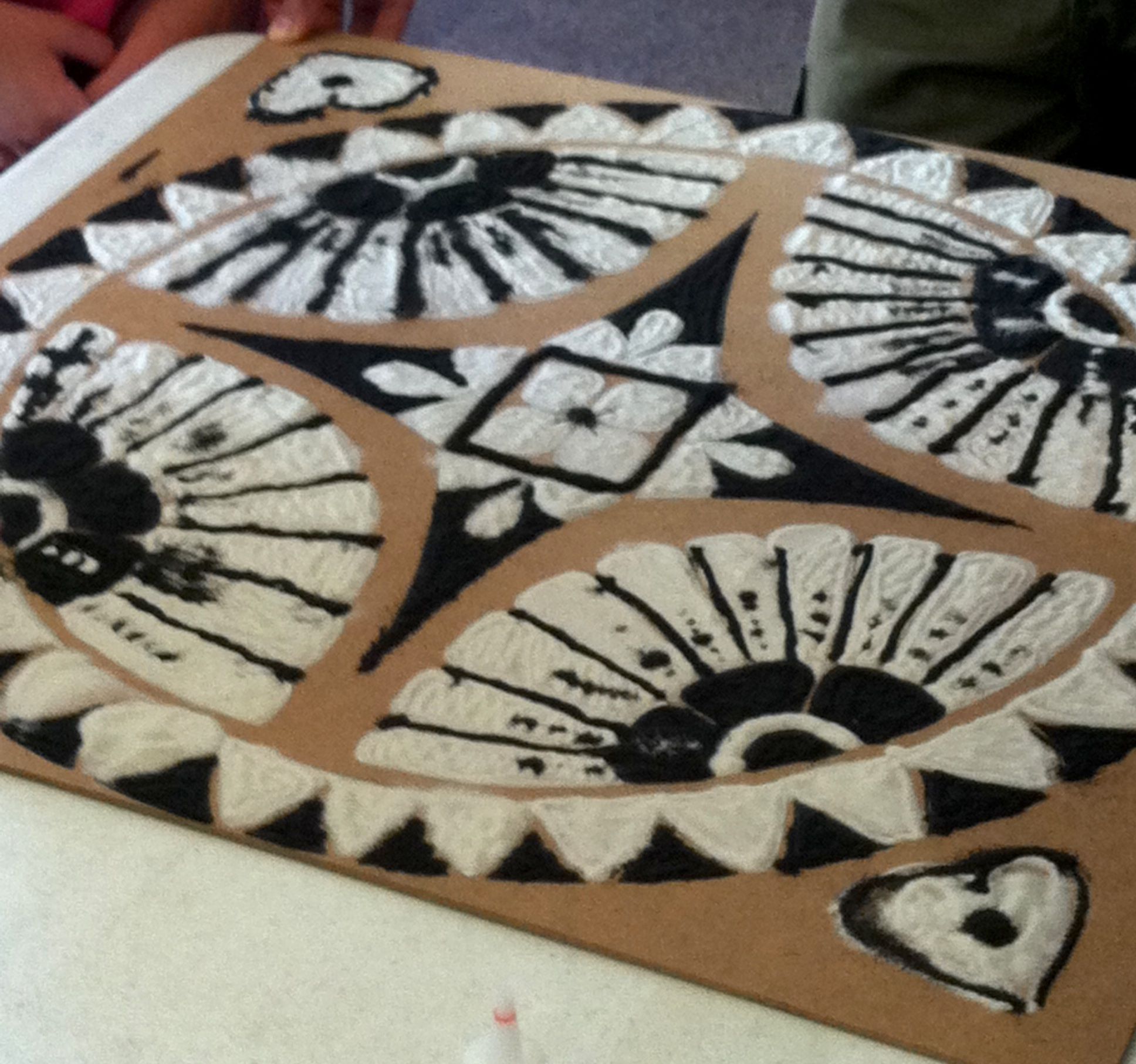
• We carried it out to the parking lot where the Rev. tossed it into the wind. Not a single bit of sand remained to show what we had made - and yet we were all laughing and smiling.
• And, of course, the Reverend has the mandala board and extra sand so he can create another sand mandala in the future. I know he works with soldiers returned from war, so I am hoping it might help to introduce them to the idea of tangling.
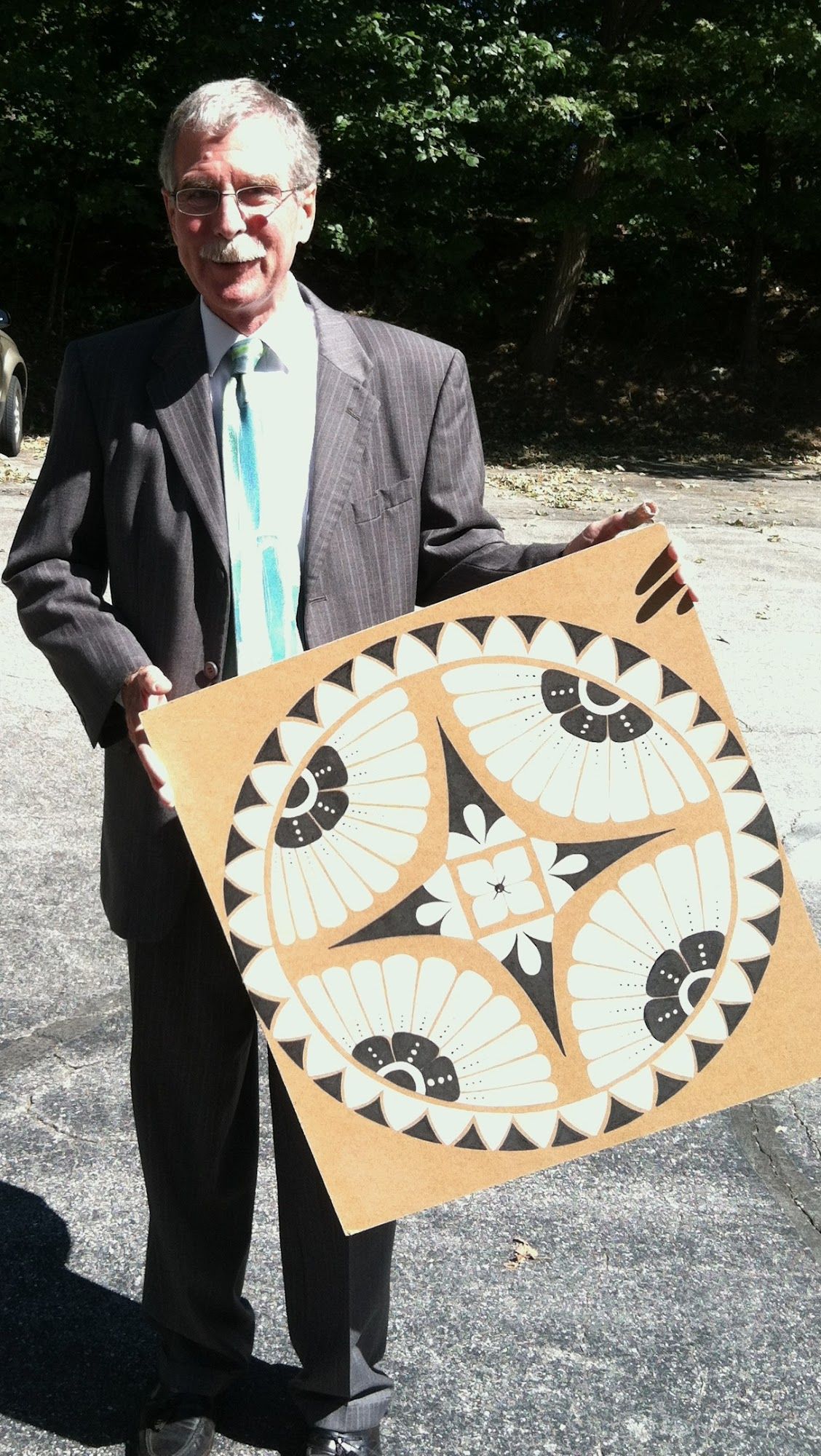
I really love seeing the application of the Zentangle method with other, more tactile materials (blog post about shaving cream). It fascinates me how the mindfulness and creative confidence can transfer to other mediums besides pen and ink. AND how easily people accept it and dive in when they feel they recognize something about it... "I've been doodling all my life," or "pouring the sand is like decorating a cake"... has anyone else tried any unusual materials for tangling?
Subscribe to our email newsletter and unlock access to members-only content and exclusive updates.
Comments